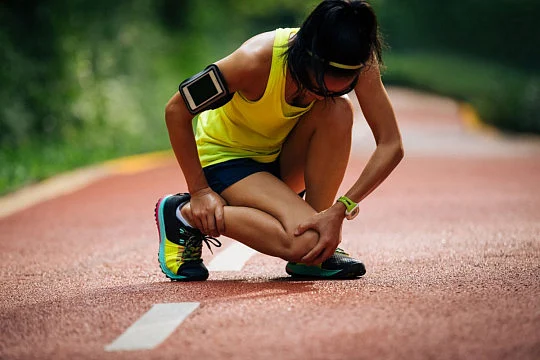We often read about cricketers and tennis players pulling out of important matches and tournaments on account of injuries sustained during play and we also see them back at their game soon enough, playing in top form. Wrestlers get knocked around and are all put back together, in seemingly no time, for their next bout. Going by the apparently little to no time taken by professional sportspersons, athletes and wrestlers to bounce back after suffering an injury, it may seem like such incidents might not be worth getting too worried about. Do not be fooled!
Professional sportspersons have a host of doctors, physiotherapists and other experts whose sole job is to get them back into the game as soon as possible and without their skills or strength compromised. Unfortunately for regular people like us, we are left to tend to our injuries ourselves. Which is why it is of utmost importance to understand how best to rehab our injuries and also when to seek professional help, if required.
What to do and how to do it?
Injuries can be of various kinds since no two bodies are the same and different injuries may take different forms and heal in different manners. Although there isn’t one definite cure-all in such scenarios, what we do have is a more or less established and well-tested framework of treating sports/workout injuries.
The following steps can aid in managing pain and helping recover from such injuries:
Resting and preventing further injury
Our first goal must be to not aggravate the injured area. The best way to achieve this is to protect the now-fragile spot. You can use a sling or a cast if required. This not only protects the wound but also lets the body embark upon its natural healing process. This first phase is often associated with inflammation and pain. It is obvious that the range of motion here would be compromised and you must rest the affected area. However, total immobility may not be ideal and may even worsen the situation.
Recovering motion
As the swelling begins to go down along with the pain, you can try to gently ease back into your regular movements, allowing for some strain. At this stage, it’s imperative to put only as much strain as the body would allow and not overdo it, which, could result in you reinjuring yourself. Massage and physiotherapy, in conjunction with carefully calculated movement is ideal at this stage.
Recovering strength
Long recovery periods can often lead to various kinds of bodily deficits that we often don’t see happening. For instance, decline in cardiovascular endurance, muscle weaking, declined agility, are all frequently encountered after significant recovery periods. The key is to practise non-aggravating forms of exercise, such as, swimming, stationary cycling and other non-weightbearing workouts.
The goal is to keep building your strength while letting the injured area get back to normal.
Going back to former form and function
This last stage of injury rehabilitation is aimed at allowing you to go back to your sport or fitness routine. Your injury is all healed and you are excited to hit the track, the court or the gym. However, even the most disciplined sportspersons with the most dedicated recovery regimens are often eased back into their game and it is for good reason. Regaining desired skill and function can only happen when you don’t push yourself too much and too soon. If all the steps listed so far are taken seriously, there’s a good chance of you not having to worry about your injury again.
P.S. Watch out for reinjury!
Unfortunately, your recovery and rehabilitation process doesn’t end with you getting back to your beloved game or workout. The most important, and often most overlooked, step is preventing reinjury. This can be achieved by figuring out and managing the risk factors that could lead to any future recurrence of the injury. It is advisable to enlist the help of a professional at this stage.
References:
5 Stages Of Injury Rehabilitation | Orthopaedic Rehabilitation | Sport (ffphysio.com)
Rehabilitation After a Sports Injury | The 5 Phases To Recovery (wellthyclinic.com)
How to rehab ANY sports injury (rockmanfitness.com)
5 Tips for Strength Training for Injury Rehab (genesisfitness.com.au)






















